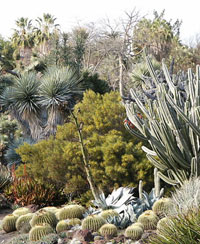
Xeriscaping, said simply, is landscaping with plants requiring little water. By using drought-tolerant native species, water consumption can be reduced by fifty to seventy five percent, conserving a great amount of water. And with many counties and cities currently going into severe water restrictions, low-water landscaping is gaining momentum.
Xeriscaping often uses native plants and grasses, which require less water and are already adapted to survive in the area. Rock, decomposed granite, and mulch often cover the ground around these plants, maintaining moisture. Grasses such as basket grass can replace current, water-hogging grasses like St. Augustine grass. Crepe myrtles, live oaks, Texas persimmons, Texas redbuds, and many other trees are also water-conserving plants. Many common flowers like Black-eyed Susans and Blackfoot Daisies are great additions to any Xeriscape lawn. Cactuses, as expected, are also common in low-water landscapes.
Many benefits also come along with these yards. Once plants have become established, very little water is needed to maintain them. Little maintenance is required, and native species of wildflowers are often considered some of the most aesthetically pleasing plants.
Whenever designing and implementing Xeriscaping techniques, an Arborist can always be of help. All it takes is a call.
Shawn Brown
New Leaf Tree and Shrub Care
903-505-9792